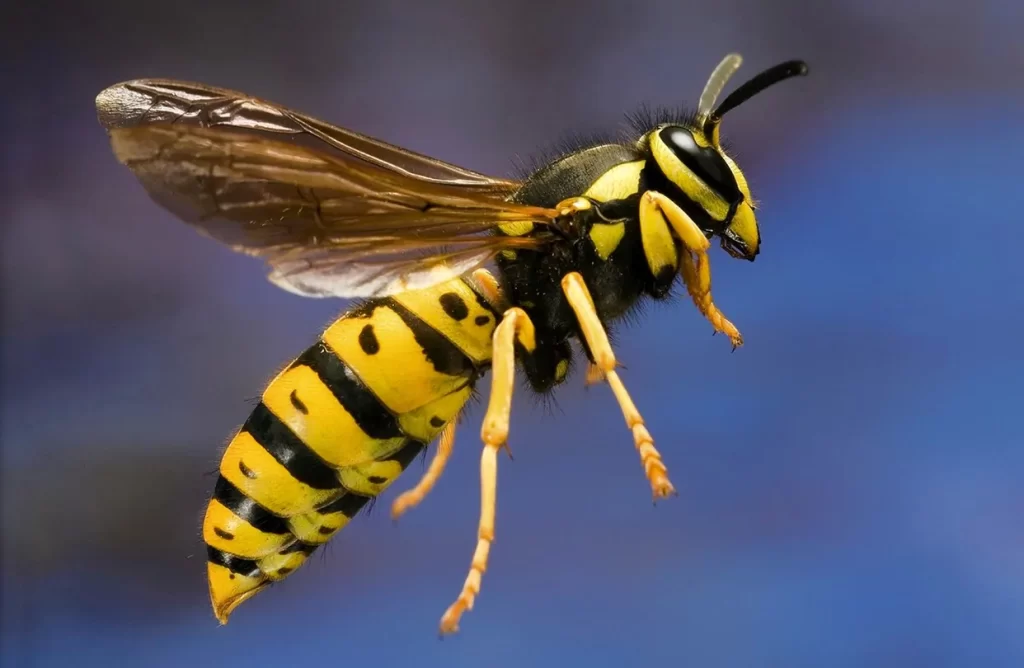In the vast tapestry of the natural world, wasps occupy a unique and often misunderstood place. These intriguing insects, known for their slender bodies, stingers, and intricate nests, captivate both scientific researchers and curious observers.
Whether encountered in gardens, forests, or even buzzing near our homes, wasps evoke a sense of wonder and, at times, trepidation. To truly appreciate and understand these enigmatic creatures, it is essential to embark on a journey of wasp identification. By unraveling their diverse species, behaviors, and ecological roles, we can gain a deeper insight into the fascinating world of wasps.
From the intricacies of their behavior and flight patterns to the seasonal presence and the quest for additional resources, each aspect of wasp identification unveils a captivating story waiting to be discovered. Join us on this enthralling adventure as we delve into the realms of wasp identification, unlocking the secrets of these remarkable insects and enriching our understanding of the natural world.

Body Shape and Size: Decoding the Elegance of Form
The world of wasps is adorned with a remarkable array of body shapes and sizes, each bearing its own unique charm. From the slender and graceful to the robust and sturdy, wasps showcase an exquisite diversity in their physical appearance.
Imagine the delicate curve of a wasp’s waist, resembling an hourglass that captivates the eye. Some species boast elongated bodies, reminiscent of a finely crafted sculpture, while others exude a compactness that emanates strength. By delving into the intricacies of their body shape and size, we unlock the first door to unravel the mysteries of wasp identification.
Coloration and Markings: Nature’s Artistry at Play
In the realm of wasps, nature dons her most vibrant palette. Colors burst forth in a dazzling symphony, enchanting the observer. Black and yellow, the classic combination, adorn the majority of wasp species, signaling caution and warning. But nature, ever the artist, adds her personal touch, bestowing some wasps with captivating variations.
Picture a wasp adorned in an iridescent metallic blue, shimmering like a sapphire in the sunlight. Others, adorned with stripes, spots, or bands, create a visual tapestry that reflects their uniqueness. The delicate brushstrokes of coloration and intricate markings grant us a glimpse into the realm of wasp identification.
Head and Facial Features: Portraits of Individuality
Within the intricate anatomy of a wasp’s head lies a world of distinctiveness waiting to be explored. The eyes, windows to their soul, vary in size and shape, unveiling their individual character. Some species boast eyes so large and captivating that they seem to hold a universe of secrets. Look closely and discover the ocelli, those simple eyes that whisper tales of navigation and orientation.
The antennae, like delicate antennae of inspiration, come in an array of lengths and shapes, a signature of each wasp’s identity. And behold, the mandibles, guardians of their realm, can bear striking patterns or colors that add a touch of majesty to their countenance. By examining their head and facial features, we embark on a journey to uncover the essence of wasp identification.
Nest Structure and Location: Architectural Marvels in Nature’s Abode
The architectural prowess of wasps shines through their intricate nest structures and strategic locations. Enter the realm of paper wasps, master builders who construct open, umbrella-shaped nests from chewed wood fibers. Witness their meticulous craftsmanship, creating a sanctuary that stands as a testament to their dedication.
Mud daubers, sculptors of a different kind, shape nests from mud, a humble material transformed into a haven for their young. And then, the social wasps, the grand architects, erect colossal nests made of paper-like material, suspended in trees or perched upon human structures. Each nest, a masterpiece of engineering, reveals the story of a wasp society, a place where the intricate tapestry of life unfolds. Nest structure and location illuminate the path to unravel the enigma of wasp identification.
Behavior and Flight Patterns: Decoding the Aerial Symphony of Wasps
In the realm of wasps, behavior and flight patterns intertwine to create a mesmerizing aerial symphony. Each species possesses its unique choreography, a dance of grace, purpose, and instinct. Observing these behaviors provides valuable insights into the identification and understanding of these remarkable insects.
Some wasps hover gracefully, their delicate wings fluttering in a synchronized rhythm, as if suspended in mid-air. They meticulously scan their surroundings, searching for nectar-rich flowers or potential prey. Their flight is a testament to their precision and agility, as they navigate through intricate vegetation or tight spaces with finesse.
Other species exhibit darting movements, darting and weaving with remarkable speed and accuracy. Their flight patterns resemble the swift dart of an arrow, as they zip through the air in pursuit of their objectives. This agility enables them to swiftly capture prey or defend their territory, showcasing their predatory prowess.
The flight behavior of wasps can also be influenced by external factors such as weather conditions and the availability of resources. During periods of inclement weather, wasps may alter their flight patterns, seeking shelter or modifying their foraging strategies. They adapt to the ever-changing conditions, showcasing their resilience and flexibility.
Understanding the nuances of behavior and flight patterns allows us to appreciate the intricate adaptations of wasps to their ecological niche. It provides a glimpse into their hunting strategies, foraging preferences, and territorial interactions. By observing their movements and actions, we unlock the secrets of their survival and unravel the beauty of their existence.
Seasonal Presence: Unveiling Nature’s Calendar of Wasps
In the grand tapestry of nature, the presence of wasps is intricately woven into the fabric of the seasons. Each species has its own unique timing, emerging during specific times of the year and playing a vital role in the ecosystem.
Spring ushers in the awakening of wasp activity, as overwintered queens emerge from hibernation to establish new colonies. These queens, the founding members of their respective colonies, embark on a quest to locate suitable nesting sites and begin the construction of their nests. The arrival of spring brings with it a sense of renewal, as wasp colonies begin their journey of growth and expansion.
Summer sees the peak of wasp populations. The colonies thrive, bustling with activity as workers tirelessly gather food, expand the nest, and care for the growing brood. This is the time when encounters with wasps are most common, as their quest for sustenance leads them to gardens, picnics, and outdoor gatherings. They contribute to the pollination of plants and play a crucial role in maintaining the balance of insect populations.
As the warmth of summer fades into autumn, wasps undergo a transition. The colony’s focus shifts from growth to reproduction. New queens and male drones emerge, ready to mate and ensure the continuation of their species. This period also marks the decline of worker wasps, as their lifespan reaches its end. The once-vibrant colonies begin to dwindle, paving the way for the next generation.
Winter brings a sense of dormancy and hibernation for wasps. The surviving queens seek shelter in protected locations, such as crevices in trees or buildings, waiting for the arrival of spring to initiate the cycle anew. Their survival during the winter months is crucial, as the fate of the species rests upon their ability to withstand the harsh conditions.
By understanding the seasonal presence of wasps, we gain insights into their life cycles and ecological significance. It allows us to appreciate the delicate balance of nature, where each season brings forth its own cast of characters, contributing to the intricate web of life.
Additional Resources: Unlocking the Doors to Expert Knowledge
Embarking on a journey of wasp identification and understanding may
require additional resources to delve deeper into the world of wasps. Thankfully, a wealth of information and expertise is available to aid in this quest for knowledge.
Field guides dedicated to insects and specifically wasps are invaluable resources for enthusiasts and researchers alike. These guides often feature detailed descriptions, vivid illustrations, and distribution maps of various wasp species. They provide a comprehensive overview of the diverse world of wasps, helping to identify specific characteristics and narrowing down potential species.
Online resources have become indispensable tools in the realm of insect identification. Numerous websites and databases cater to the needs of entomologists, naturalists, and curious individuals. These platforms offer photo galleries, species profiles, and discussion forums where experts and enthusiasts share their knowledge and experiences. Online resources also provide a means to connect with fellow enthusiasts, seek assistance with identification challenges, and expand one’s understanding of wasp identification.
Institutions such as museums, universities, and research organizations often have entomology departments or experts specializing in wasps. Consulting with these professionals can provide valuable insights and guidance. Experts can offer expert opinions, assist in specimen identification, and provide access to research publications that delve into the intricate details of wasp taxonomy, behavior, and ecology.
Local entomology or naturalist clubs and societies offer opportunities for engagement and learning. These groups organize field trips, workshops, and lectures led by seasoned entomologists, fostering a community of individuals passionate about the natural world. By joining these organizations, enthusiasts can gain firsthand experience, learn from experts, and participate in citizen science projects focused on wasp research and monitoring.
Nature centers, botanical gardens, and wildlife sanctuaries often host educational programs and events that highlight the diversity of insects, including wasps. These venues provide a chance to observe and learn about these fascinating creatures in their natural habitats. Knowledgeable guides and educators offer informative sessions, sharing insights into the lives of wasps and fostering a deeper connection to the natural world.
Conclusion
In conclusion, the quest for knowledge and identification of wasps can be enhanced through a variety of additional resources. Field guides, online platforms, experts, local organizations, and educational institutions all contribute to expanding our understanding of these remarkable insects.
By tapping into these resources, enthusiasts and researchers can unlock the doors to expert knowledge and embark on a lifelong journey of discovery and appreciation for the intricate world of wasp identification.

